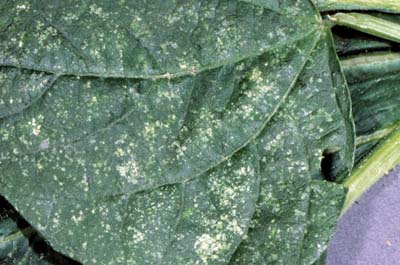To save the Web-optimized images shown below to your hard drive:
|
|
Click to access Display and Print quality images. |
The garden fleahopper is not considered a pest of commercial crops but is a garden pest. It causes damage by sucking sap from the plant cells, leaving the foliage speckled with yellow or white spots. The garden leafhopper has a wide host range, but leguminous plants are more likely to be attacked. The most common biocontrol agent is a parasitic wasp. Suppression is commonly achieved by using insecticides. Cultural control practices include removal of alternate hosts and planting in areas that are free of leguminous plants.
Images
To save the Web-optimized images shown below to your hard drive:

Garden fleahopper injury to a bean leaf. The scattered
speckling is typical of fleahopper and other plant bugs
(family Miridae), but also of some other piercing-sucking
insects such as leafhoppers.
(Photographer: P. Choate, University of Florida)
Click to access Display and Print quality images.
|
Click to access Display and Print quality images. |
|
Click to access Display and Print quality images. |
|
Click to access Display and Print quality images. |